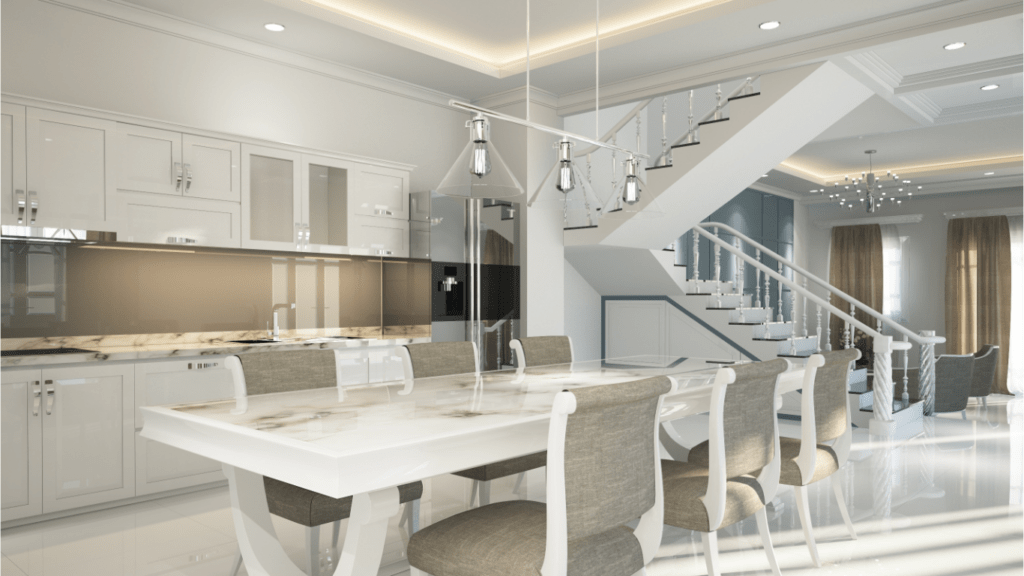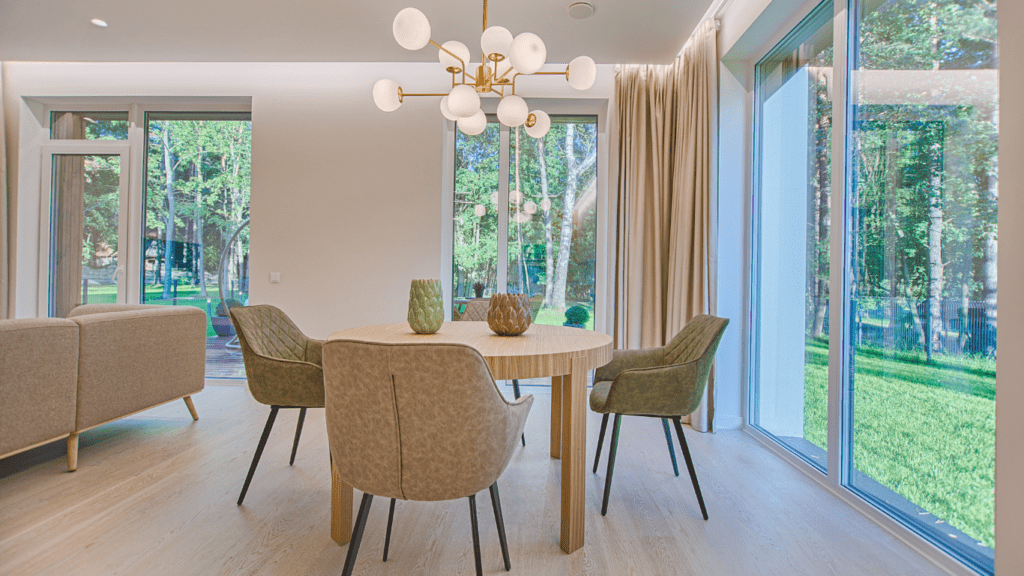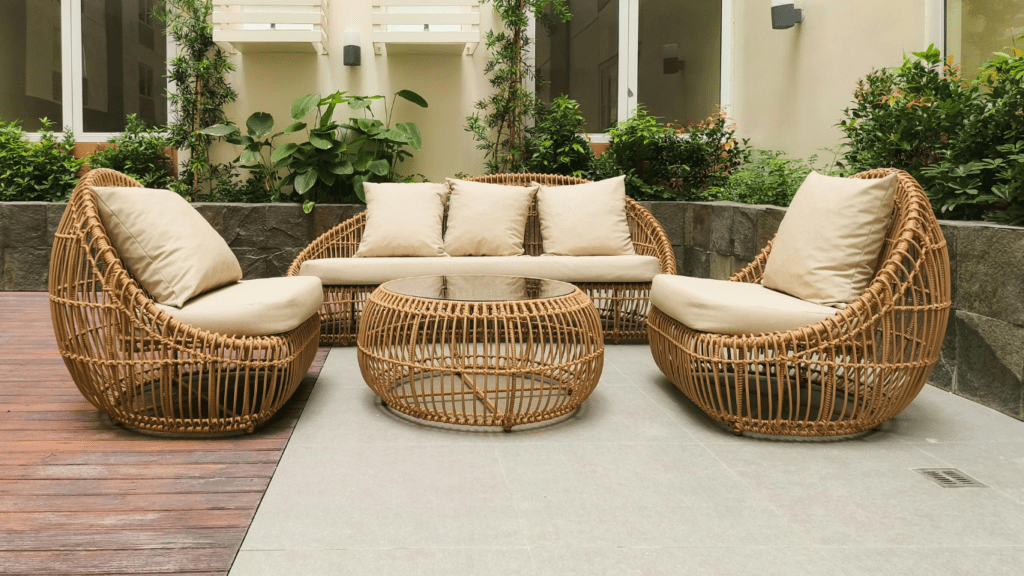A Brief History of Luxury Furniture Design
Luxury furniture design has roots in ancient civilizations. In Egypt around 3000 BCE, pharaohs used opulent pieces made from gilded wood, gold, and ivory to reflect their wealth and status. Greek and Roman empires further evolved furniture craftsmanship by incorporating intricate carvings and more practical designs, highlighted by lavish use of marble and bronze.
During the Renaissance in the 15th century, Europe saw a significant transformation in luxury furniture. Artisans began experimenting with more elaborate and ornate designs, using woods like oak, walnut, and mahogany. This period also introduced inlays and intarsia, wood techniques creating complex patterns and images.
In the 17th and 18th centuries, in France, luxury furniture reached new heights under the reigns of Louis XIV, Louis XV, and Louis XVI. The Rococo and Baroque styles emerged, emphasizing curves, asymmetry, and detailed ornamentation. Furniture from this era included pieces like the cabriole leg and commode, often adorned with gilding and rich fabrics.
Victorian-era luxury furniture, from the mid-19th century, embraced eclectic designs combining various styles and materials. The advent of the Industrial Revolution allowed for more detailed craftsmanship and mass production, making luxury items more available to the affluent class.
The 20th century saw modernism take hold, with designers like Le Corbusier and Ludwig Mies van der Rohe focusing on minimalist aesthetics and functionality. Materials such as steel, leather, and glass became popular in creating sleek and sophisticated pieces.
In the late 20th and early 21st centuries, luxury furniture design has integrated technology and sustainability, reflecting contemporary values. Designers now employ eco-friendly materials and smart features to cater to discerning, environmentally conscious consumers while maintaining elegance and luxury.
Current Trends in Luxury Furniture Design
Luxury furniture design now merges tradition with innovation. New trends focus on sustainability, personalization, and technology.
Sustainable Materials
Sustainable materials have become essential in luxury furniture. Designers use reclaimed wood, bamboo, and recycled metals in their creations. For example, reclaimed wood furniture not only boasts unique character but also reduces deforestation. Bamboo’s rapid growth rate makes it an eco-friendly alternative to traditional hardwoods, supporting conservation efforts. Recycled metals bring industrial charm while minimizing the environmental impact of mining. These choices appeal to eco-conscious consumers seeking stylish yet responsible options.
Customization and Personalization
Customization and personalization have transformed the luxury furniture market. Offering bespoke pieces allows designers to create unique items tailored to individual preferences. Clients can choose specific materials, finishes, and dimensions. For instance, a custom sofa can be made to fit a particular room’s layout and aesthetic. This trend ensures each piece suits the client’s lifestyle, adding a personal touch to high-end interiors. Custom furniture reflects personal taste, making spaces more intimate and exclusive.
Smart Furniture Solutions
Smart furniture solutions enhance functionality in luxury designs. Integrating technology into furniture meets modern living demands. Examples include adjustable smart beds with sleep-tracking features and desks with built-in wireless charging. These innovations provide convenience and support healthier lifestyles. A smart coffee table might feature a refrigerator drawer and Bluetooth speakers. These elements elevate the everyday living experience, merging luxury with practicality in today’s high-tech world.
Iconic Luxury Furniture Brands
Luxury furniture brands set the tone for elegance and sophistication in home interiors. Let’s explore some established names and discover emerging designers redefining the sector.
Established Brands
- Roche Bobois
Known for avant-garde pieces, Roche Bobois offers a range of contemporary designs blending bold aesthetics with functionality. - Fendi Casa
Fendi Casa combines high fashion with home decor, presenting luxurious collections that echo the brand’s Italian heritage and craftsmanship. - Poltrona Frau
In operation since 1912, Poltrona Frau specializes in leather goods, producing timeless pieces with a blend of tradition and modernity. - Baker Furniture
Celebrated for its classic and transitional furniture, Baker Furniture delivers high-quality craftsmanship and elegant designs suited for sophisticated interiors. - Boca do Lobo
Boca do Lobo highlights artistic and emotional pieces, creating one-of-a-kind furniture that stands out with intricate details and bold designs.
Emerging Designers
- Sebastian Herkner
Sebastian Herkner brings innovative designs that merge traditional craftsmanship with modern aesthetics. His work often features unique material combinations. - Anna Karlin
Anna Karlin’s pieces exhibit a distinct sculptural quality, blending art and function, making each item a statement in luxury interiors. - Draga & Aurel
Known for their eclectic and daring pieces, Draga & Aurel push the boundaries of design, incorporating unconventional materials and techniques. - Laura Kirar
Laura Kirar creates versatile furniture that balances art with functionality. Her designs often draw inspiration from travel and nature. - Orior
With roots in Ireland, Orior produces handcrafted furniture that combines contemporary forms with traditional techniques, creating pieces with a unique character.
These brands and designers are leaders in luxury furniture design, setting trends with their innovative and elegant creations.
Integrating Luxury Furniture into Modern Spaces

Luxury furniture enhances the aesthetic of modern spaces by blending elegance with functionality.
Residential Applications
In residential settings, luxury furniture elevates the atmosphere of everyday living. High-end pieces, like a velvet Chesterfield sofa, add sophistication to living rooms, creating a timeless appeal. Customization allows homeowners to tailor furniture to personal tastes. Pieces like bespoke dining tables create a unique focal point in dining areas. Additionally, integrating smart furniture, such as adjustable smart beds, enhances comfort and convenience in bedrooms.
Commercial and Hospitality Use
Luxury furniture in commercial and hospitality spaces communicates professionalism and comfort. In office settings, executive leather chairs and solid wood desks convey a sense of prestige and efficiency. Boutique hotels often use elegant furnishings, like designer lounge chairs and marble-topped coffee tables, to create a refined and welcoming environment. Luxury furniture in restaurants, such as high-end dining sets, enhances the dining experience, making customers feel valued and pampered.
The Future of Luxury Furniture Design
Luxury furniture design is on the cusp of significant innovations. Emerging trends are redefining what it means to live in elegance and comfort. As a result, staying ahead in high-end design now involves embracing these new directions.
Sustainable Innovation
Sustainability is crucial in luxury furniture design. Conscious consumers demand eco-friendly pieces without sacrificing quality or aesthetics. Designers now use reclaimed wood, recycled metals, and natural fibers for their creations. For instance, pieces from brands like Fendi Casa and Roche Bobois incorporate sustainable materials seamlessly.
Smart Technology Integration
Smart technology is transforming furniture. Integrating tech into high-end designs offers convenience with a touch of elegance. Advanced features, such as:
- voice-activated controls
- embedded charging stations
- smart lighting
add both comfort and functionality. For example, adjustable smart beds and multifunctional tables are gaining popularity.
Customization and Personalization
Customized furniture provides a unique touch. Bespoke designs allow clients to tailor pieces to their preferences, ensuring exclusivity. Brands like Boca do Lobo and Poltrona Frau excel in offering personalized luxury furniture, meeting the specific needs and tastes of their clientele.
Emphasis on Craftsmanship
Despite technological advances, traditional craftsmanship remains vital. Handcrafted pieces emphasize attention to detail and quality. Emerging designers like Sebastian Herkner and Anna Karlin are blending time-honored techniques with contemporary styles, pushing the envelope of luxury design.
Multi-Functional Designs
Multifunctional furniture is becoming a staple. As living spaces shrink, especially in urban areas, the need for versatile pieces grows. Designers are creating items that serve multiple purposes without compromising luxury. Examples include storage ottomans and extendable dining tables.
Global Influences
Cultural influences are shaping luxury furniture design. There’s a move towards integrating diverse aesthetics from around the world. This trend results in eclectic yet harmonious interiors that tell a story. Brands and designers are drawing inspiration from various cultures to create unique, globally-inspired pieces.
Health and Wellness Focus
Health and wellness have become central to luxury design. Ergonomic furniture that promotes well-being is in demand. Products like adjustable ergonomic chairs and modular seating arrangements are designed to enhance physical comfort and health.
The future of luxury furniture design lies in marrying innovation with timeless elegance. Embracing sustainability, smart technology, customization, craftsmanship, multifunctionality, global influences, and wellness will drive the industry forward, creating spaces that are both beautiful and functional.



 Founder & CEO
Irenee Nunezerro is the visionary founder and CEO of Luxe House Maker, with over 15 years of experience in luxury real estate and interior design. Known for her expertise in blending opulence with innovation, Irenee launched Luxe House Maker to provide readers with comprehensive updates on the latest trends in high-end properties, interior décor, and smart home technology. Her passion for creating luxurious, technologically advanced spaces has positioned Luxe House Maker as a leading resource for those seeking to elevate their lifestyles. Irenee’s commitment to delivering cutting-edge content ensures that Luxe House Maker stays at the forefront of the luxury market.
Founder & CEO
Irenee Nunezerro is the visionary founder and CEO of Luxe House Maker, with over 15 years of experience in luxury real estate and interior design. Known for her expertise in blending opulence with innovation, Irenee launched Luxe House Maker to provide readers with comprehensive updates on the latest trends in high-end properties, interior décor, and smart home technology. Her passion for creating luxurious, technologically advanced spaces has positioned Luxe House Maker as a leading resource for those seeking to elevate their lifestyles. Irenee’s commitment to delivering cutting-edge content ensures that Luxe House Maker stays at the forefront of the luxury market.
